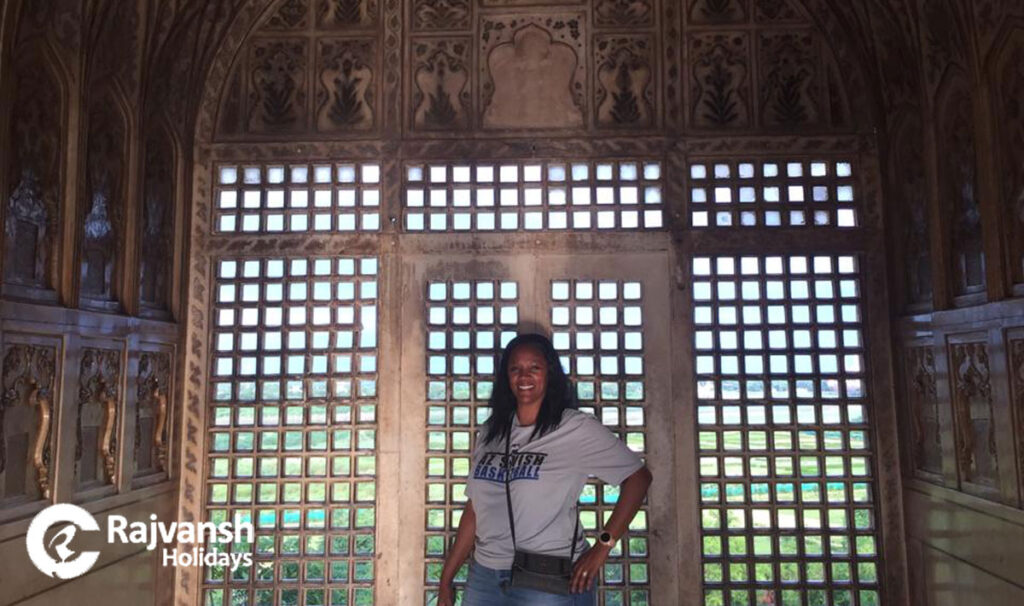The Taj Mahal, an iconic symbol of love and architectural brilliance, stands proudly on the banks of the Yamuna River in Agra, India. Commissioned by the Mughal emperor Shah Jahan in memory of his beloved wife Mumtaz Mahal, this white marble mausoleum has transcended its original purpose, becoming a global cultural phenomenon that has left an indelible mark on art and culture.
Book some of the best tour of Taj Mahal below:
Agra Same Day Tour by Car from Delhi
Agra Same Day Tour by Gatimaan Express Train
Taj Mahal Agra Fort Private Sunrise Tour From Delhi
From Delhi: Private Same Day Agra Tour by Car
Aesthetic Inspiration:
The Taj Mahal’s architectural beauty has served as a profound source of inspiration for artists, architects, and designers worldwide. Its symmetrical design, intricate detailing, and harmonious proportions have influenced diverse fields, from traditional Indian art to modern global architecture. The monument’s unique blend of Persian, Ottoman, Indian, and Islamic architectural elements has set a standard for aesthetic excellence.
Cultural Significance:
In India, the Taj Mahal is not merely a historical monument; it is a cultural treasure that reflects the rich heritage of the Mughal era. Artists and craftsmen have drawn inspiration from its ornate calligraphy, delicate marble inlays, and the lush gardens surrounding it. The Taj Mahal’s influence extends to various art forms, including paintings, sculptures, and literature, where its timeless romance and historical significance are often celebrated.
Taj Mahal Global Impact on Architecture:
Beyond India’s borders, the Taj Mahal has left an indelible imprint on global architecture. Its iconic dome, elegant minarets, and intricate lattice work have inspired architects worldwide. The use of white marble and meticulous detailing seen in the Taj Mahal can be found in structures across the globe, from government buildings to luxurious hotels, paying homage to the enduring appeal of Mughal architecture.
Literary and Cinematic Reverence:
The Taj Mahal’s romantic narrative has been a recurring theme in literature and cinema. Countless poets, writers, and filmmakers have been captivated by its story, weaving tales of love and devotion. The monument’s grandeur has served as a backdrop for numerous films and novels, amplifying its cultural impact globally and perpetuating the legend of Shah Jahan and Mumtaz Mahal.
Taj Mahal Tourism and Economic Impact:
As one of the New Seven Wonders of the World, the Taj Mahal draws millions of visitors annually. This influx has not only boosted tourism in India but has also contributed significantly to the local economy. The craft industries in Agra, particularly marble inlay work and traditional handicrafts, have flourished due to the monument’s global popularity.
Preservation Efforts and Global Awareness:
The Taj Mahal’s cultural influence extends to global initiatives for heritage conservation. Its inclusion in UNESCO’s list of World Heritage Sites has heightened awareness about the need for preservation and sustainable tourism practices. International collaborations and funding have been crucial in ensuring the monument’s longevity for future generations.
Cultural Impact and Symbolism:
The Taj Mahal’s visual appeal, marked by lush greenery, a reddish pathway, and the ever-changing tints of the blue sky, holds profound cultural significance. The intricate relief work, including arches, domes, and marble inlay with precious stones, adds layers of symbolism to this architectural marvel, enriching the cultural narrative associated with the monument.
Uniqueness Planning of Taj Mahal:
The genius planning of the Taj Mahal goes beyond aesthetics. The deliberate placement of the tomb at one end of the quadripartite garden, the octagonal tomb chamber, and the raised platform with extended minarets all contribute to the uniqueness of its design. The intricate planning provides rich depth and perspective, showcasing the meticulous attention to detail.
Graves and Minarets of Taj Mahal:
The design of the Taj Mahal’s tomb, featuring the cenotaphs of Mumtaz Mahal and Shah Jahan, along with the illusionary upper cenotaphs, showcases a unique architectural approach. The four free-standing minarets at the corners not only serve as spatial references but also contribute to a three-dimensional effect, adding a new dimension to Mughal architecture. Complementing the Taj Mahal’s grandeur are the main gate, mosque, and guest house. Each element contributes to the overall symmetrical and balanced design of the complex. The mosque and guest house, constructed with red sandstone in contrast to the marble tomb, exemplify the harmonious blend of materials and architectural styles.
Tourism and Environmental Protection:
While tourism has significantly contributed to the Taj Mahal’s popularity, measures are in place to protect the monument from environmental harm. A defined buffer zone of 10,400 sq km shields the Taj Mahal from pollution, showcasing a commitment to preserving its cultural and environmental integrity. Stringent regulations, including the Supreme Court’s ruling on industrial practices, demonstrate a dedication to environmental conservation in the Taj Trapezium Zone. Artists across the globe have been captivated by the Taj Mahal’s beauty. It has been depicted in paintings, photographs, sculptures, and various art forms, showcasing its elegance and significance.
Supervision and Integrated Management Plan:
The responsibility for managing the Taj Mahal complex falls under the purview of the Archaeological Survey of India. Legal protection and regulatory frameworks are in place to ensure the monument’s integrity. An integrated management plan is deemed necessary to address the challenges posed by increasing visitation and proposed infrastructure development. This plan would also guide comprehensive public use and development guidelines.
Please feel free to contact us at any time for any travel information, tour bookings, tickets, transportation, or hotel bookings in India. Just call or WhatsApp us at +91 98370 44720. You can also visit our official website: www.tajmahaltourguide.com

